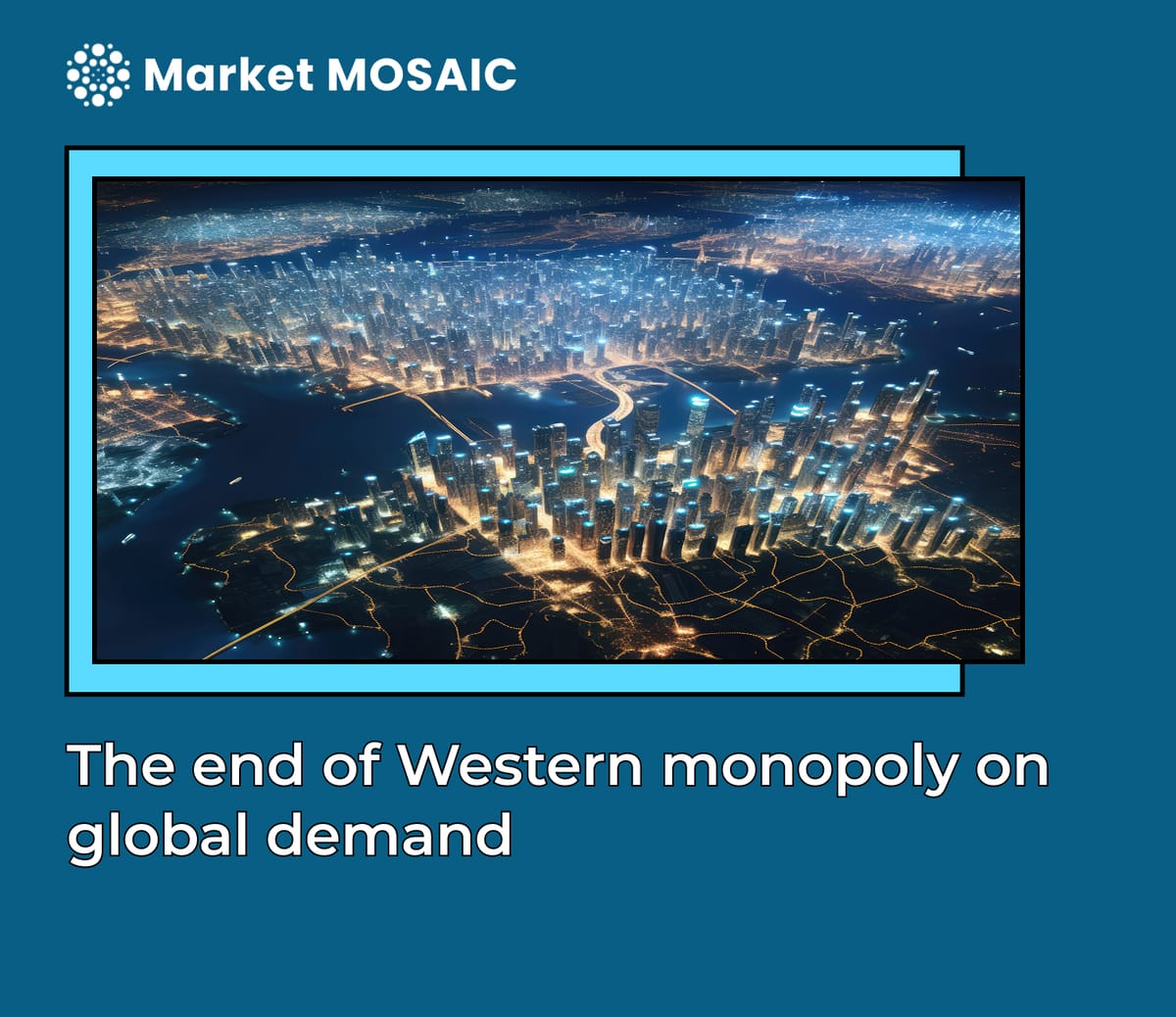The end of Western monopoly on global demand

In the emerging global economy, power will no longer be defined solely by GDP, it will be determined by where growth is happening. By 2075, the structure of the global economy will be fundamentally transformed, with Asia emerging as its dominant force. Goldman Sachs’ long-term projections place China at the top with a GDP of $57 trillion, closely trailed by India at $52.5 trillion. The United States, while still growing, is expected to reach $51.5 trillion, shifting from sole global leader to one of three major economic powers in a newly balanced global order.
Consumer gravity is relocating
This isn’t just a numerical shift, it’s a deep realignment of global consumer demand. For much of the modern era, Western economies have set the tone for consumer behavior, brand influence, and product strategy. But that dominance is fading. In the coming decades, the majority of the world’s middle class will be concentrated in Asia and emerging markets, where rising incomes, digital adoption, and cultural momentum will reshape the global consumption landscape.
For today’s business leaders, the message is clear: the future is no longer centered in the West. Companies must pivot toward these high-growth regions, not as secondary markets, but as primary engines of demand. The brands that will thrive are those that build with cultural intelligence, operate with local insight, and design flexible models that can adapt to diverse and evolving market realities
Adapting for the new consumer majority
Meeting the expectations of the next billion consumers requires more than market entry. It demands a full strategic transformation. Products must align with regional lifestyles and values. Marketing must be built on cultural relevance rather than translation. Operations, from pricing to fulfillment, must be optimized for affordability, infrastructure, and behavior that differ widely from the West.
This shift also introduces new expectations around sustainability and value. Emerging market consumers are discerning and increasingly motivated by a combination of price, impact, and purpose. Businesses that can offer affordable innovation with ethical integrity will be best positioned to earn trust and loyalty.
The time to act is now
While 2075 may seem distant, the groundwork for this transformation is already being laid. Infrastructure is improving, education systems are expanding, digital platforms are proliferating, and urbanization is accelerating. These trends are creating fertile ground for rapid consumer activation. The companies that act now—investing in local leadership, forming regional partnerships, and building market-specific strategies—will define the next era of global commerce.
A more inclusive global narrative
This coming shift is not only economic. It is cultural. As purchasing power rebalances, so does influence. The global narrative will no longer be shaped exclusively by Western norms and markets. Instead, it will reflect a richer, more diverse world—one where brands succeed not by exporting their values, but by integrating into the values of the communities they serve.
For founders, executives, and strategists, this is more than a forecast. It is a call to reimagine how value is created, delivered, and measured in a changing world. The next chapter of global growth will not be written in the boardrooms of New York or London, but in the rising cities of Asia and Africa.
Looking ahead
The question is no longer whether this shift will happen. It already is. The only question now is who will be ready. Companies that recognize and act on this shift today will be the architects of a new global economy, one shaped by inclusion, innovation, and a deep understanding of where the world is going.
The future of consumer demand is in motion.





